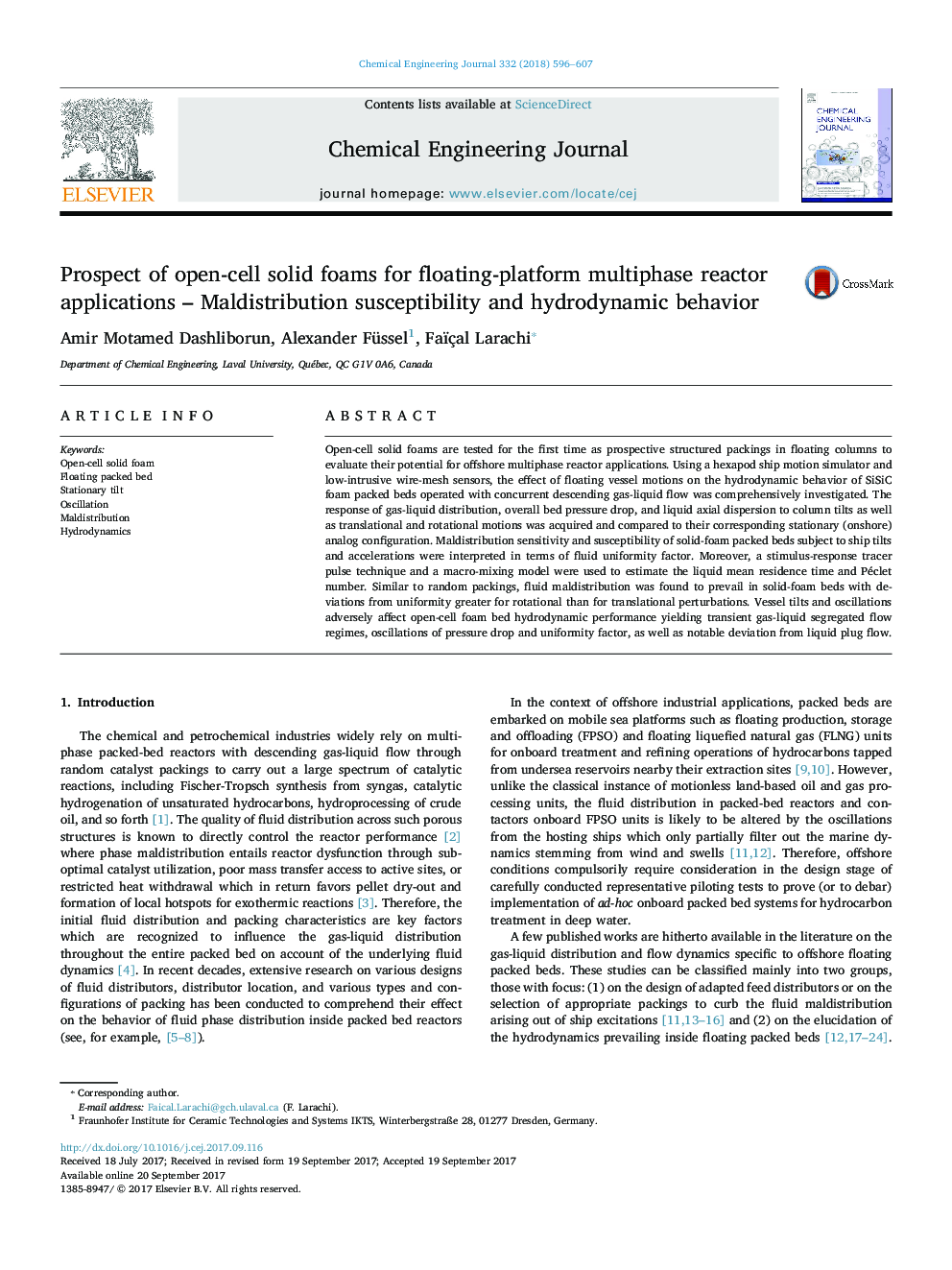| Article ID | Journal | Published Year | Pages | File Type |
|---|---|---|---|---|
| 6464968 | Chemical Engineering Journal | 2018 | 12 Pages |
â¢Open-cell solid foams were tested as a structured packing for offshore floating beds.â¢Maldistribution susceptibility and hydrodynamics of foam beds under swell effect were studied.â¢Column tilts and oscillations altered noticeably the prevailing bed hydrodynamics.â¢Tilting and motions caused severe fluid maldistribution inside the foam packing.â¢All types of ship oscillations were responsible for increased liquid back-mixing.
Open-cell solid foams are tested for the first time as prospective structured packings in floating columns to evaluate their potential for offshore multiphase reactor applications. Using a hexapod ship motion simulator and low-intrusive wire-mesh sensors, the effect of floating vessel motions on the hydrodynamic behavior of SiSiC foam packed beds operated with concurrent descending gas-liquid flow was comprehensively investigated. The response of gas-liquid distribution, overall bed pressure drop, and liquid axial dispersion to column tilts as well as translational and rotational motions was acquired and compared to their corresponding stationary (onshore) analog configuration. Maldistribution sensitivity and susceptibility of solid-foam packed beds subject to ship tilts and accelerations were interpreted in terms of fluid uniformity factor. Moreover, a stimulus-response tracer pulse technique and a macro-mixing model were used to estimate the liquid mean residence time and Péclet number. Similar to random packings, fluid maldistribution was found to prevail in solid-foam beds with deviations from uniformity greater for rotational than for translational perturbations. Vessel tilts and oscillations adversely affect open-cell foam bed hydrodynamic performance yielding transient gas-liquid segregated flow regimes, oscillations of pressure drop and uniformity factor, as well as notable deviation from liquid plug flow.
